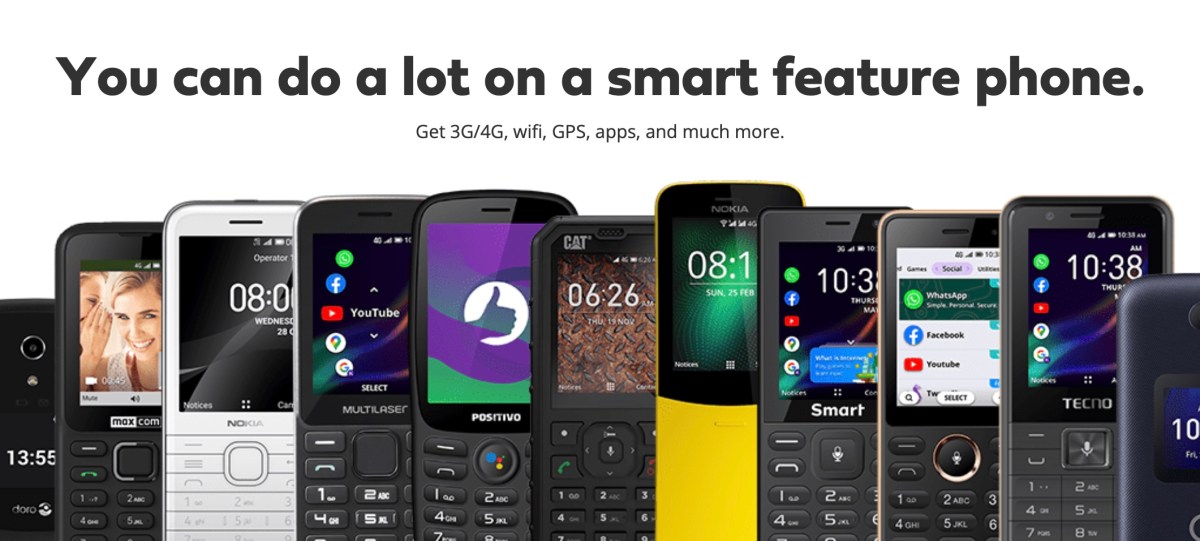Products You May Like
Smartphone shipments have been declining in what has been a rough year for mobile handsets, and that’s meant even more pressure on an already-precarious sliver of the mobile market: feature phones. Today, one of the players in that space, the feature phone operating system startup KaiOS, is getting a small financial injection that both speaks to that pressure, but also a chance to grow in what remains an opening in the market: selling cheaper and low-end, but ultimately still functional and usable devices, to the poorest consumers in developing economies in sub-Saharan Africa.
The Hong Kong-based feature phone startup, which has previously been backed by strategic investors like Google and TCL, has picked up $3.4 million from Finnfund, an impact investor out of Finland.
Finnfund’s financing is coming in the form of a convertible note — meaning it could convert into equity in a potential future funding round.
We’ve reached out to Sebastien Codeville, the founder and CEO of KaiOS, to ask whether more financial activity is in the pipeline and will update this post as we learn more. It’s been a while since KaiOS raised (or more specifically disclosed) outside investment: its last funding was in 2019, when it raised $50 million from investors including Cathay Innovation, Google and TCL.
Finnfund and KaiOS said that today’s money will go towards KaiOS building out its business in sub-Saharan Africa — a major market for lower-end, low-cost devices. Africa is a particular focus for the investor, and it’s directly backed a number of startups in the region, too, including food supply-chain startup Twiga and fintech Jumo.
“With this investment, KaiOS can expand into new markets in Sub-Saharan Africa,” said Codeville in a statement. “We are happy to partner with an investor like Finnfund who share our vision of how important it is to boost digitalisation in Africa.”
Finnfund estimates that there are some 3.4 billion people in the world today without internet access, mostly in developing economies, and mostly because they cannot afford smartphones. Even the cheapest smartphone models, powered for example Google’s Android OS, can work out to be as high as 20% of consumers’ monthly incomes, Finnfund estimates. (Running a little math on its numbers, Finnfund’s investment works out to $0.001 or 1/10 of a cent investment per potential user.)
KaiOS’s pitch is that it’s a low-cost alternative for handset makers that want to build feature phones that can compete with low-end smartphones. Equipped with apps and other hallmarks of in internet-enabled handsets, KaiOS currently lists 41 handset models running its OS, with the cheapest devices retailing for about $10.
But the startup has a tall order ahead of it.
KaiOS spent its early years on the wings of a lot of promise. It began life in 2017 as a fork of Firefox OS, which was an ill-fated attempt by Mozilla and partners to build a viable smartphone platform competitor to Google-backed Android and Apple’s iOS. Optimistically, the KaiOS team saw an opening to target the lowest end of the consumer market, in developing economies, and to consolidate R&D aimed at these users on a single platform for advanced feature phones.
Others agreed, and KaiOS quickly picked up OEMs like Nokia, as well as software partners to build out its ecosystem. Even Google, hedging its bets, wanted to make sure it played a strong role in the feature phone segment even as Android grew its market share, and so it became a strategic partner to KaiOS, investing tens of millions of dollars in the startup.
But things haven’t played out as expected.
When KaiOS announced funding in 2019, it said that some 100 million devices using its OS had been shipped. At the time, IDC predicted that 500 million feature phones would be shipped annually for the next five. Today, the company says just that “over 170 million” KaiOS-powered devices have been shipped — with active users in the market a far lower number of around 100 million. It’s estimated that KaiOS today has a 0.07% share of the total mobile market. In contrast, Android, which itself has been powering an ever-cheaper range of smartphones, has just over 71% and iOS has a 28.3% share.
In addition to the small market share for feature phones, its overall sales volume is also in decline. India, followed by China, Pakistan and Bangladesh, are the countries that dominate the feature phone market today. But on the other hand, given that Nigeria is the only country in Africa to make it into the top-five markets for feature phones (it’s number five), that does imply that there is still potential across the rest of the continent, something that Finnfund is hoping to build on.
“The investment in KaiOS is yet another important step in connecting the unconnected,” said Finnfund investment manager Kuutti Kilpeläinen, in a statement. “KaiOS has proved that it can solve the affordability problem and we are proud to join the group of investors who all share the same ambitious goal of closing the digital gap.”
